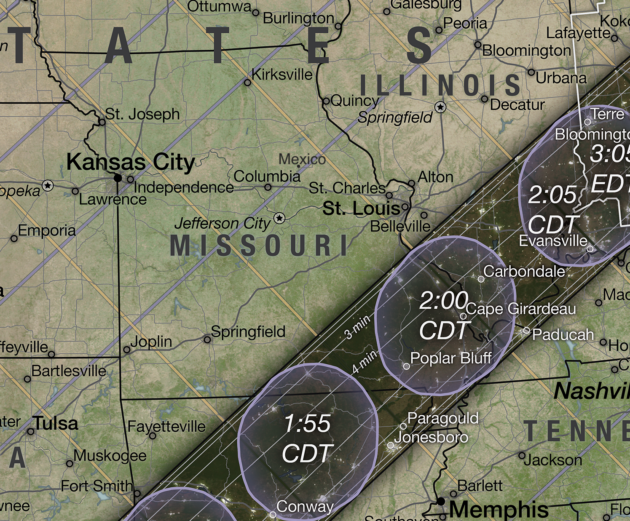Almost 500,000 Missouri will be in the path of the solar eclipse on April 8. Some reports say that one million people from other parts of the state, as well as visitors from other states, may travel to the Missouri portion of the shadow’s path.
A 115-mile stretch from West Plains to Cape Girardeau will experience the total solar eclipse from 1:55 p.m.to 2:04 p.m. A total solar eclipse happens when the moon passes between the sun and the earth, completely blocking the sun for several minutes. From partial eclipse through totality, the process takes several hours. The final moments before totality include displays of light known as Baily’s beads and the diamond ring caused by the pockmarked surface of the moon.

The state expects large crowds, including visitors from out of state and even out of the country, who will attend weekend festivals and watch the eclipse. Motorists are advised to plan ahead if they want to view the eclipse, know where they want to be and make accommodations as early as possible. There are 20 Missouri state parks and historic sites where people can see the total eclipse, but those will likely be booked soon.
One Kansas City area man told Metro Voice that four of his relatives are driving in on Friday from Utah. The entire family will then head to the southern part of the state on Monday and return that evening.
Visitors are advised to plan to arrive at their viewing location early and stay long after the eclipse to avoid the most traffic. Bring plenty of food, water and sunscreen, and gas up your vehicle. Print out a map or bring an atlas. During totality and after, internet connections and cellphone networks may be overloaded.
After April 8, the next total solar eclipse won’t happen in parts of the United States until 2044. According to Timeanddate.com, it will cover a swath of Canada and a small portion of the northern plains. Another eclipse in August 2045 will cover a much portion of the United States.
Even though the eclipse will be total across the southern portion, much of of the rest of the state will be at near-total conditions. Near Kansas City, for example, 95% of the sun will be blocked
–Alan Goforth | Metro Voice








